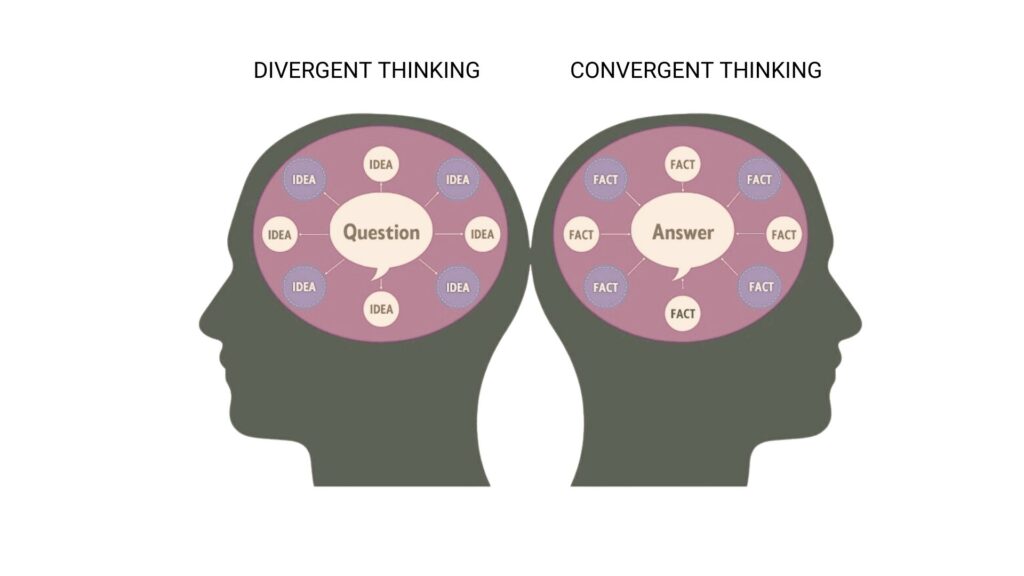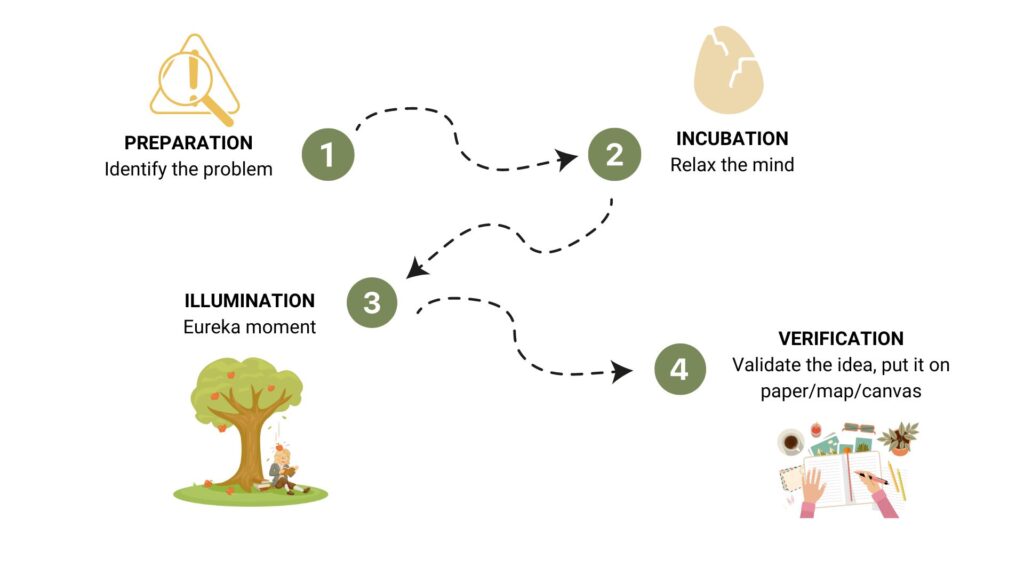Creativity and natural enviroments
Creativity
Creativity is defined as the generation of novel and valuable ideas to solve problems. It is a multifaceted process encompassing divergent thinking, idea generation, and problem-solving.
Divergent thinking (the opposite of convergent thinking) plays a crucial role in the creative process, encompassing fluency, originality, elaboration, and flexibility.

The creative process (and link with natural environments)
The creative process unfolds through stages of preparation, incubation, idea generation, and evaluation, with the incubation period facilitating novel insights and problem-solving breakthroughs (Guilford 1950).

Preparation
Focused attention is the brain’s ability to concentrate its attention on a target stimulus for any period of time.
Nature, which is filled with intriguing stimuli, modestly grabs attention in a bottom-up fashion, allowing top-down directed-attention abilities a chance to replenish. Unlike natural environments, urban environments are filled with stimulation that captures attention dramatically and additionally requires directed attention.
Incubation
The incubation stage is essential for allowing unconscious thought processes to connect random dots, leading to innovative and creative breakthroughs.
Natural settings can stimulate creative thinking, encourage unconventional ideas, and contribute to the generation of innovative solutions. Therefore, the combination of incubation and exposure to natural environments can synergistically enhance creative thinking processes.
Illumination
When seeking inspiration for problem-solving, the inspiration may occur as a momentary “Ah-ha!” moment or gut reaction.
The term ‘Eureka!’ can be traced back to the ancient Greek mathematician Archimedes, who famously exclaimed the word, which translates to “I have found it!”, upon discovering the principle of buoyancy while taking a bath.
Verification
Following the “Ah-ha, Eureka” moment, the words get written down, the vision is put on a map or the business plan is developed. Whatever ideas and insights arose in stage 3 are fleshed out and developed. It is the stage where critical thinking and aesthetic judgment skills refine the work and then communicate its value to others.
The stages of the creative process often unfold in a non-linear and unpredictable manner. Rather than following a strict sequence, creativity tends to resemble a zigzag or spiral, characterised by twists, turns, and unexpected detours. While this model of creativity may have its limitations, it serves as a valuable guide for navigating our creative journey, providing a sense of direction amid uncertainty.
Types of creativity/thinking
The below types of thinking collectively contribute to the creative process, allowing individuals to approach problems from different perspectives, make unique connections, and generate novel ideas and solutions.
- Divergent thinking involves generating multiple ideas from one topic, exploring various solutions without a right or wrong answer. It allows individuals to think outside the box and make unconventional connections, fostering creativity.
- Aesthetic thinking is related to creativity in the context of appreciating beauty, design, and artistic expression. It involves a deep appreciation for visual and sensory experiences, which can inspire creative endeavours.
- System thinking is an approach to problem-solving that views ‘problems’ as part of a wider, dynamic system. It is the process of understanding how things influence one another as part of a whole.
- Lateral thinking is about individuals exploring unconventional ideas and make unexpected connections to solve problems creatively.
- Inspirational thinking focuses on imagining the best-case scenarios to find a new way to solve a problem.

